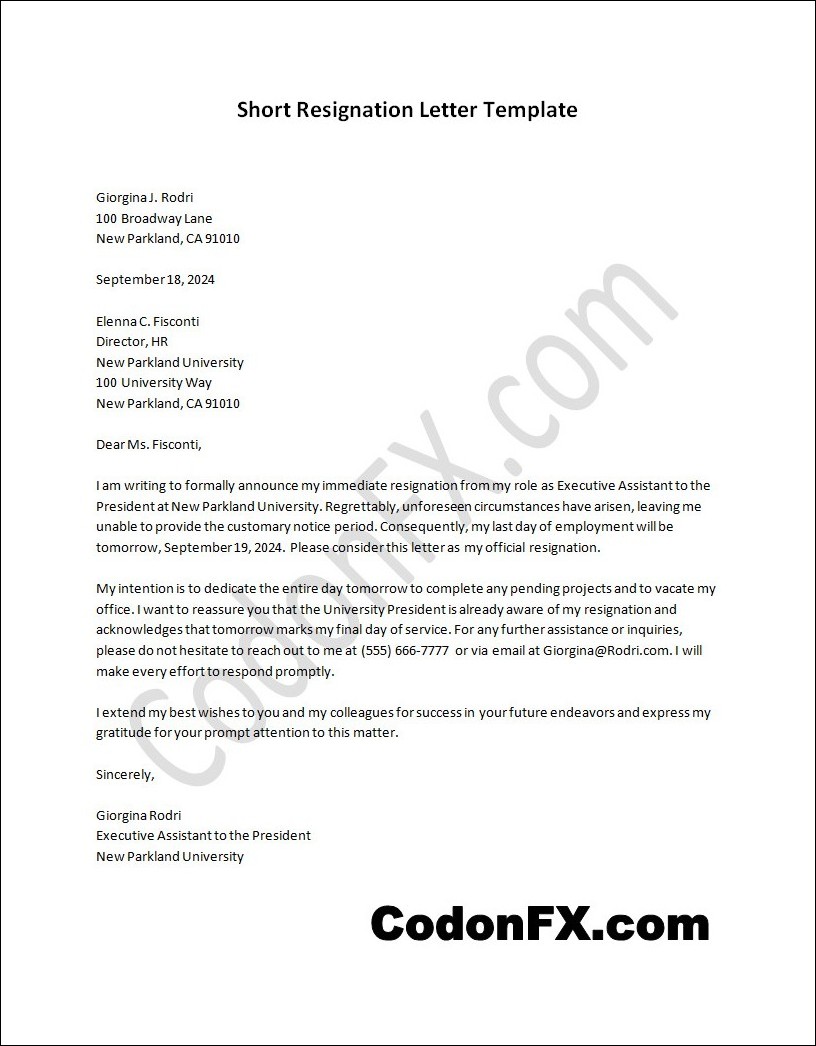
A short resignation letter template can be a lifesaver when you find yourself in a situation where you need to resign from your job quickly and efficiently. By using a template, you can save time and ensure that you include all the necessary information in your letter.
In this article, we will explore the benefits of using a short resignation letter template, what to include in it, and provide some helpful tips and a sample to assist you in creating your own letter.
What is a short resignation letter?
A short resignation letter is a concise and straightforward letter written by an employee to formally communicate their decision to leave their current job or position. It is usually brief and to the point, focusing on the essential details of the resignation.
The primary purpose of a short resignation letter is to maintain professionalism and ensure a smooth transition during the departure process. It allows the employee to formally notify their employer of their decision while providing them with the necessary information to plan for the departure. By keeping the letter concise, the employee can avoid unnecessary complications or misunderstandings.
A short resignation letter also serves as a professional courtesy to the employer. It demonstrates respect for the employer’s time and allows them to begin the process of finding a suitable replacement. Expressing gratitude in the letter acknowledges the positive aspects of the employment and helps maintain a positive relationship with the employer, which can be beneficial for future references or networking opportunities.
Benefits of a Short Resignation Letter
Here are some advantages of using a short resignation letter:
- Clarity: A short resignation letter allows you to clearly state your intention to leave the company without any ambiguity. This helps to avoid confusion and ensures that both you and your employer are on the same page.
- Efficiency: Writing a short resignation letter saves time and effort for both parties involved. It allows you to express your decision quickly and concisely, while your employer can process the information more efficiently.
- Professionalism: Keeping your resignation letter brief demonstrates professionalism and respect towards your employer. It shows that you value their time and understand the importance of maintaining a positive relationship, even during the resignation process.
- Positivity: A short resignation letter allows you to focus on the positive aspects of your time with the company. By avoiding unnecessary details or negative comments, you can leave on a good note and maintain a positive reference for future job opportunities.
By using this approach, you can ensure a smooth transition and leave a lasting impression of professionalism and gratitude.
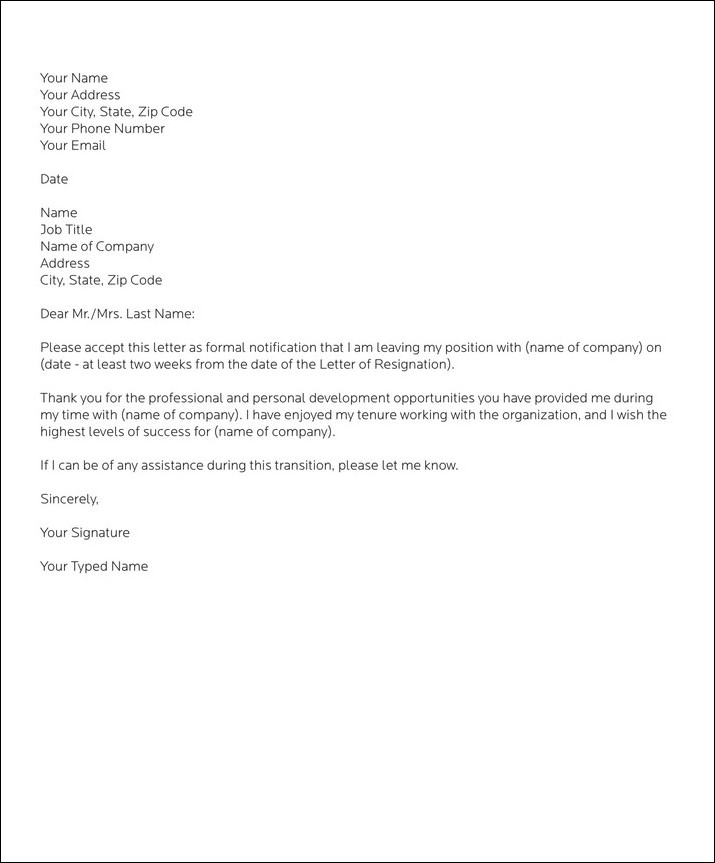
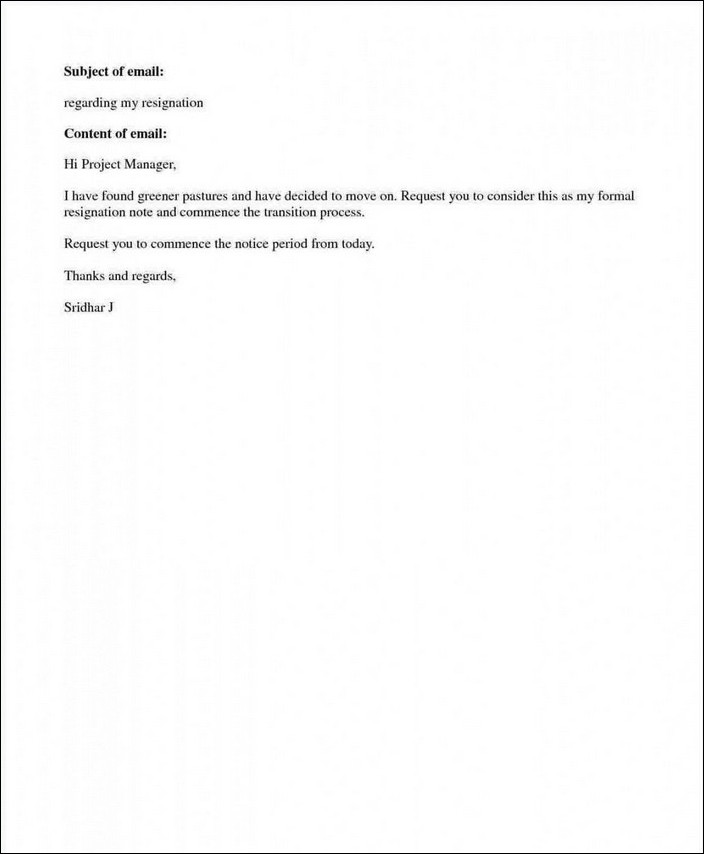
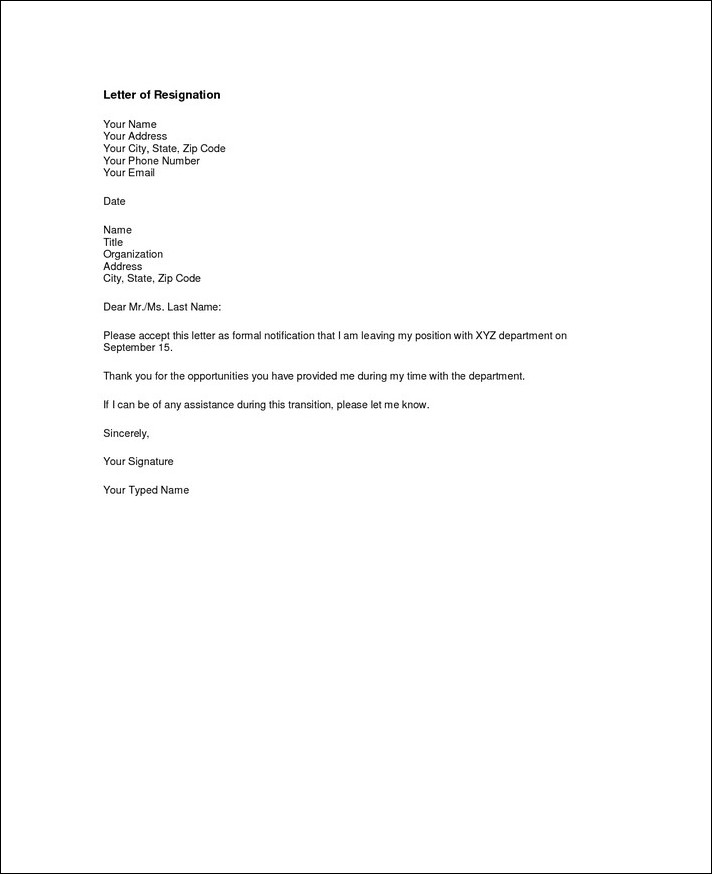
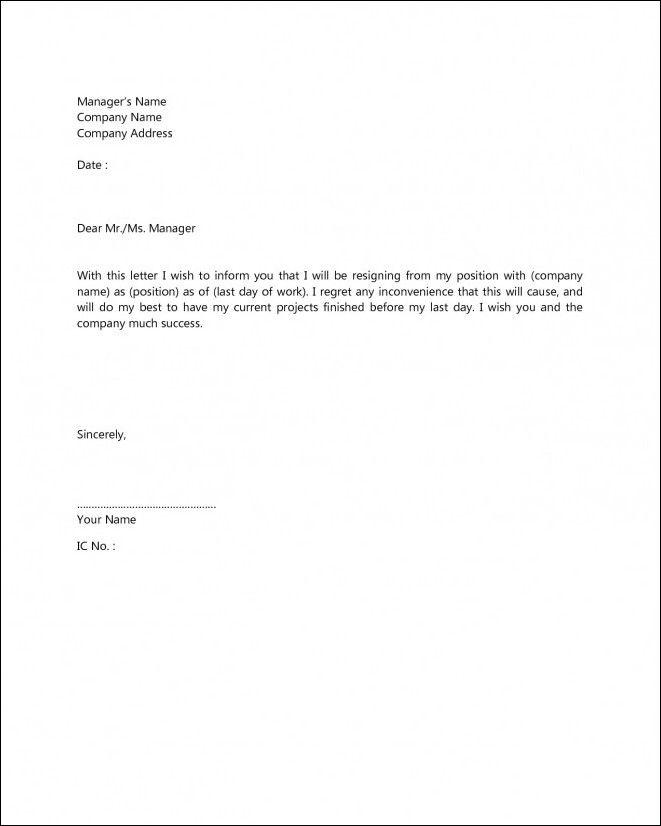
What to include in a short resignation letter?
When drafting a short resignation letter, it is important to include all the necessary information to ensure a smooth transition and maintain a professional relationship with your employer. Here are some key items to include in your resignation letter:
- Date: Begin your resignation letter by including the current date. This will serve as a reference point for both you and your employer.
- Greetings: Address your letter to your immediate supervisor or the relevant person in your organization. Use a formal salutation, such as “Dear [Supervisor’s Name],” to maintain a professional tone.
- Statement of resignation: Clearly state your intention to resign from your position. Keep this part concise and to the point, specifying the date of your last working day. For example, “I am writing to inform you that I am resigning from my position as [job title] at [company name], effective [last working day].”
- Reason (optional): While it is not mandatory, you may choose to briefly mention your reason for resigning. However, it is important to maintain a neutral and professional tone when explaining your decision.
- Gratitude: Express your gratitude towards your employer for the opportunities you have had during your time with the company. This will help maintain a positive relationship and leave a good impression.
- Offer to assist: In your resignation letter, you can offer to assist with the transition process, such as training a replacement or completing any pending projects before your departure. This shows your professionalism and commitment until the very end.
- Closing: End your letter with a polite and professional closing, such as “Sincerely” or “Best regards,” followed by your full name and contact information.
- Handing over: After submitting your resignation letter, make sure to have a conversation with your immediate supervisor to discuss any handover procedures or further steps that need to be taken.
Tips to create a short resignation letter
Here are some tips to help you create a concise and effective resignation letter:
- Be clear and concise: Keep your resignation letter short and to the point. State your intention to resign, mention your last working day, and express gratitude for the opportunities given to you.
- Use a professional tone: Maintain a neutral and polite tone throughout the letter. Avoid being negative or critical, even if you had a difficult experience in the organization. Remember, this letter will be part of your employment record.
- Express gratitude: Show appreciation for the experiences, skills, and knowledge gained during your time with the company. Thank your employer for the opportunities provided and any support received.
- Offer assistance: If possible, offer to help with the transition process. This can include training your replacement or providing documentation to ensure a smooth handover.
Short Resignation Letter Template | Word – Download